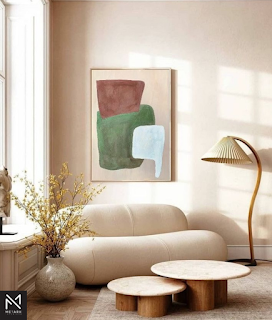Light Up Your Life: The Importance of Lighting in Interior Design
Lighting is a fundamental element in interior design, often overlooked but critical in transforming a space. It not only illuminates a room but also influences mood, aesthetics, and functionality. The right lighting can make a space feel warm and inviting, enhance architectural features, and improve overall well-being. In this blog, we'll explore the importance of lighting in interior design and provide tips on how to effectively use lighting to elevate your home or office environment.
1. Setting the Mood with Lighting
Creating Atmosphere
Lighting has the power to set the mood in any room. Whether you want a cozy, intimate setting or a bright, energetic atmosphere, the type and intensity of light you choose will play a significant role. Warm, dim lighting is perfect for creating a relaxing environment in living rooms and bedrooms, while cooler, brighter lights are ideal for workspaces and kitchens where focus and clarity are essential.
Tips:
- Use dimmers to adjust light levels according to the time of day and activity.
- Layer different types of lighting (ambient, task, and accent) to create depth and interest.
- Consider the color temperature of bulbs (measured in Kelvins) to match the desired mood.
2. Enhancing Aesthetic Appeal
Highlighting Design Elements
Strategic lighting can enhance the aesthetic appeal of your interior design by highlighting architectural features, artworks, and decorative elements. Accent lighting, such as spotlights or wall-mounted fixtures, can draw attention to specific areas, creating focal points and adding drama to a space.
Tips:
- Use track lighting to highlight artwork or architectural features.
- Install under-cabinet lighting in kitchens to showcase countertops and provide additional task lighting.
- Consider using LED strip lights for a modern and sleek look, ideal for accentuating edges and contours.
3. Improving Functionality
Practical Applications
Effective lighting is essential for functionality, ensuring that spaces are practical and usable for their intended purposes. Task lighting, such as desk lamps or pendant lights over a kitchen island, provides focused illumination for specific activities, making tasks easier and more comfortable to perform.
Tips:
- Ensure workspaces, like kitchens and home offices, have ample task lighting to reduce eye strain and increase productivity.
- Use adjustable lighting solutions, like swing-arm lamps, to direct light where it's needed most.
- Incorporate motion-sensor lights in areas like hallways and closets for convenience and energy efficiency.
4. Enhancing Well-Being
The Impact on Health
Lighting significantly impacts our well-being, influencing our mood, energy levels, and even sleep patterns. Natural light is the most beneficial, helping to regulate our circadian rhythms and boost our mood. However, in spaces with limited natural light, using artificial lighting that mimics natural daylight can help improve mental and physical health.
Tips:
- Maximize natural light by using sheer curtains and strategically placing mirrors to reflect light throughout the room.
- Choose full-spectrum light bulbs that mimic natural daylight for areas where you spend a lot of time.
- Install programmable lighting systems that adjust light levels throughout the day to support natural circadian rhythms.
5. Energy Efficiency
Sustainable Lighting Solutions
Incorporating energy-efficient lighting solutions is not only beneficial for the environment but also helps reduce energy costs. LED bulbs, for example, use significantly less energy than traditional incandescent bulbs and have a much longer lifespan.
Tips:
- Replace incandescent bulbs with energy-efficient LED or CFL bulbs.
- Use timers and smart lighting systems to reduce energy consumption when lights are not needed.
- Consider solar-powered outdoor lighting for an eco-friendly option.




.png)






.png)











.png)
.png)
.png)


